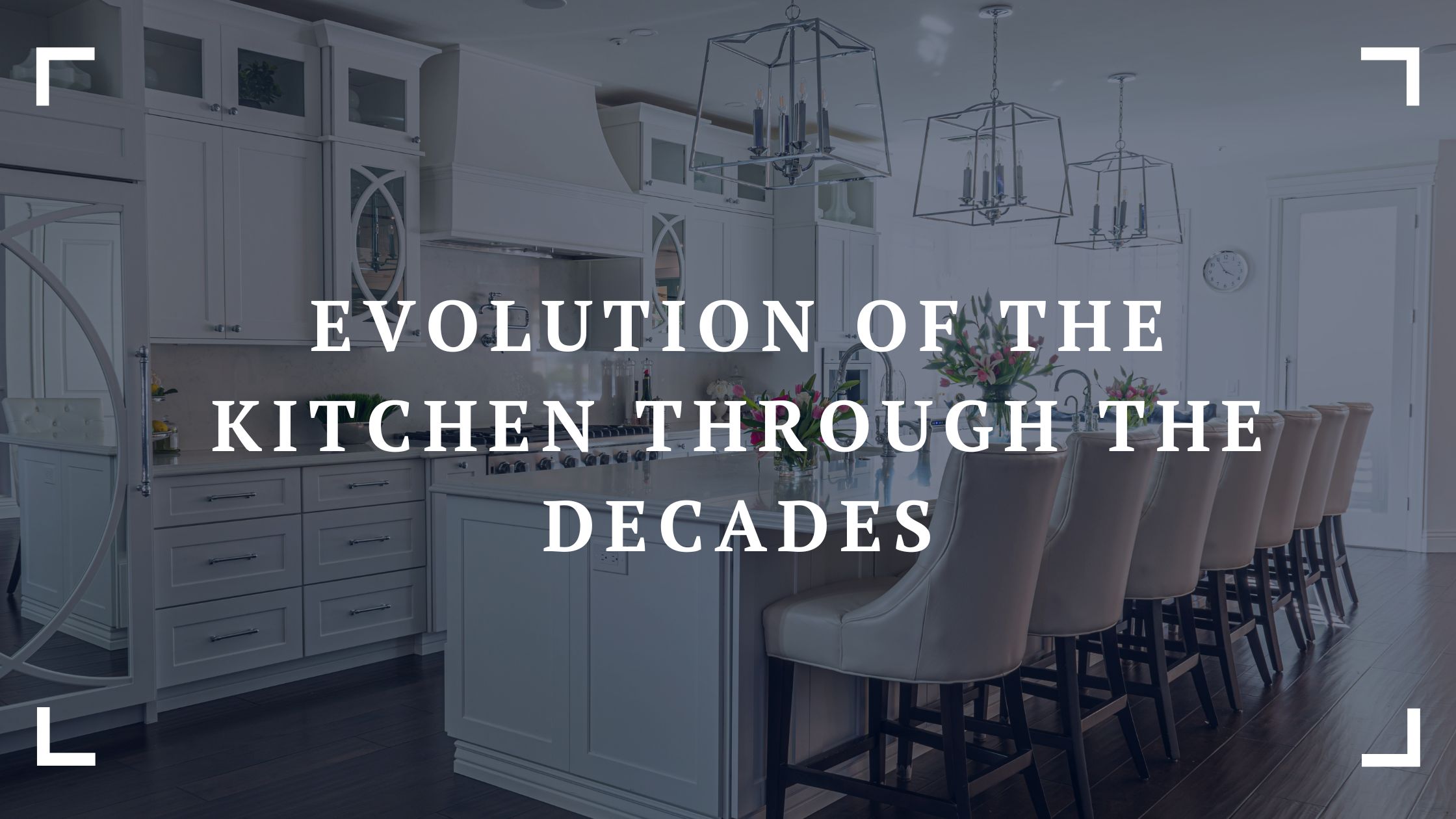The design of kitchens has evolved significantly over time. In the past, kitchens were often small, separate rooms that were used only for cooking and not for entertaining or socializing. They were typically located at the back of the house and were not connected to other living areas.

In the early 20th century, the concept of the “modern kitchen” began to emerge. This was driven in part by advances in technology and the increasing availability of electricity, which made it easier to have appliances and other conveniences in the kitchen. The modern kitchen was designed to be more efficient and functional, with features such as built-in cabinets and countertops, and a layout that allowed for more efficient workflow.
In the 1950s and 1960s, the trend towards open-plan living and dining areas led to a further evolution of kitchen design. Kitchens became more integrated with the rest of the home and were often designed as part of a larger, open space that included the dining and living areas. This helped to create a more social and interactive environment for cooking and entertaining.
In the 1980s and 1990s, the focus on the kitchen as a social space continued to grow, and there was a trend towards larger and more luxurious kitchens. This was driven in part by the increasing popularity of cooking shows and the growing interest in home cooking and entertaining. Kitchens became more high-tech, with features such as built-in appliances, granite countertops, and custom cabinetry.
Today, the trend towards more open and interactive kitchens continues, with many people opting for large, open-plan kitchens that are connected to other living and dining areas. In addition, there is a trend towards more sustainable and energy-efficient kitchen designs, with features such as energy-efficient appliances and low-VOC (volatile organic compound) materials.
What is a Contemporary Kitchen?
A contemporary kitchen is a type of kitchen design that is characterized by a clean, minimalistic and uncluttered aesthetic. It typically features a combination of sleek, modern materials such as stainless steel and glass, as well as a neutral color palette of whites, grays and blacks.
In contemporary kitchen furniture, the focus is on function and efficiency, with an emphasis on practicality and simplicity. The layout is often open and spacious, with clean lines and a lack of ornamentation. This allows the kitchen to be a more cohesive and integrated part of the home, rather than a separate, enclosed space.
Contemporary kitchens often incorporate state-of-the-art appliances and modern technologies, such as touchless faucets, built-in refrigerators and induction cooktops. They may also include features such as under-cabinet lighting and hidden storage to create a more streamlined and clutter-free look.
How to Choose the Right Kitchen Theme to Suit Your Home
When choosing a style for your kitchen design, there are many factors to consider. Some things to consider include your personal style, the style of the rest of your home, and the overall aesthetic you want to achieve. Here are a few popular kitchen design styles to consider:
- Traditional kitchen design is characterized by its use of classic materials such as wood, stone, and metal. It often features formal, elegant details like crown molding and intricate backsplashes.
- Modern kitchen design is all about clean lines and a sleek, minimalist aesthetic. It often incorporates materials like stainless steel, concrete, and glass, and uses bold, geometric shapes.
- Rustic kitchen design embraces the natural beauty of wood, stone, and other earthy materials. It often features warm, natural colors, and may incorporate elements like exposed beams and distressed finishes.
- Farmhouse kitchen design is inspired by the rustic charm of rural farmhouses. It often features natural materials like wood and stone, and incorporates elements like distressed finishes, farmhouse sinks, and shiplap walls.
- Contemporary kitchen design is characterized by its use of clean, modern lines and a focus on function. It often incorporates the latest trends in materials and technology, and may feature bold, geometric shapes and pops of color.
Factors to Consider When Choosing a Kitchen Theme
When selecting a home kitchen theme, it’s essential to consider various factors. Start by thinking about your personal style and preferences, as the theme should resonate with your taste. Ensure that your chosen theme aligns with the kitchen’s functionality – if you’re an avid cook, prioritize practicality. If you’re looking to create a unique, functional kitchen, check out these kitchen renovation ideas.
Choose a color palette that complements the theme, and consider any cultural or regional influences that could inspire your choice. Keep in mind the timelessness of the theme, as well as your budget and available space. But don’t hesitate to explore bolder colder options for a more modern touch and exclusivity.
It’s crucial to evaluate how your appliances and fixtures will fit the chosen theme and whether the materials and decor are easily accessible. Texture and materials play a significant role – consider how they’ll contribute to the kitchen design you envision.
Emotional connection matters too. You’ll spend a lot of time in the kitchen, so the theme should evoke positive feelings. Moreover, consider the theme’s flexibility for future changes, as your preferences might evolve. That way, you can save money, especially on major kitchen renovations involving extensive plumbing and electrical work.
Ultimately, the best kitchen design style for you will depend on your personal preferences and the overall aesthetic of your home. It may be helpful to look at pictures of different kitchen design styles and see which ones resonate with you the most.


